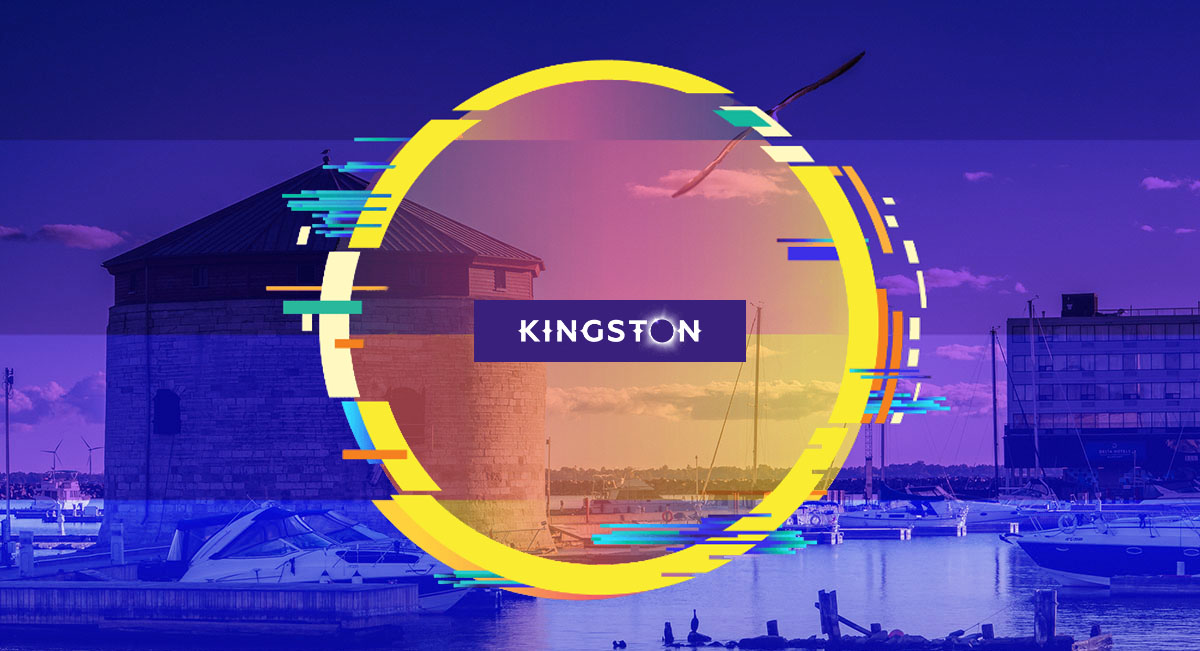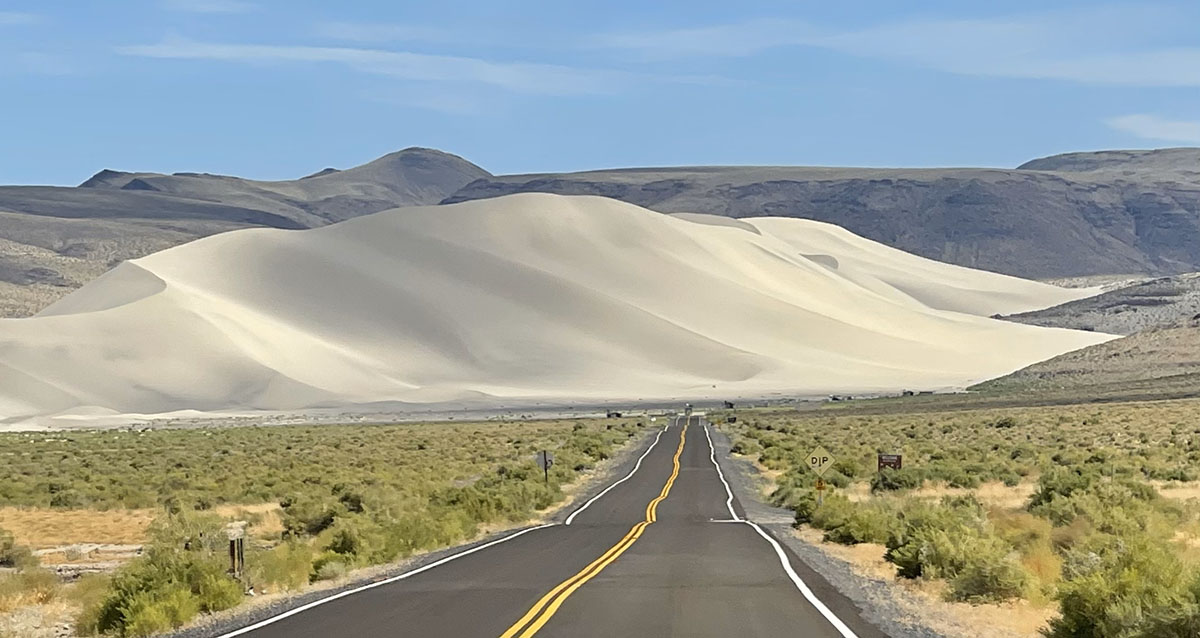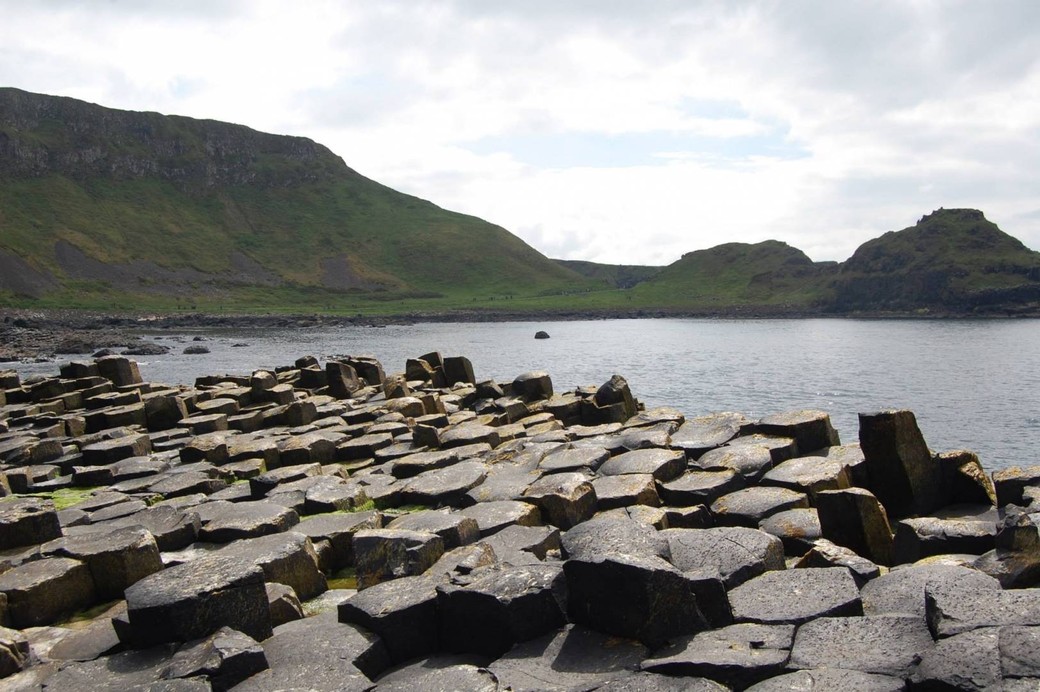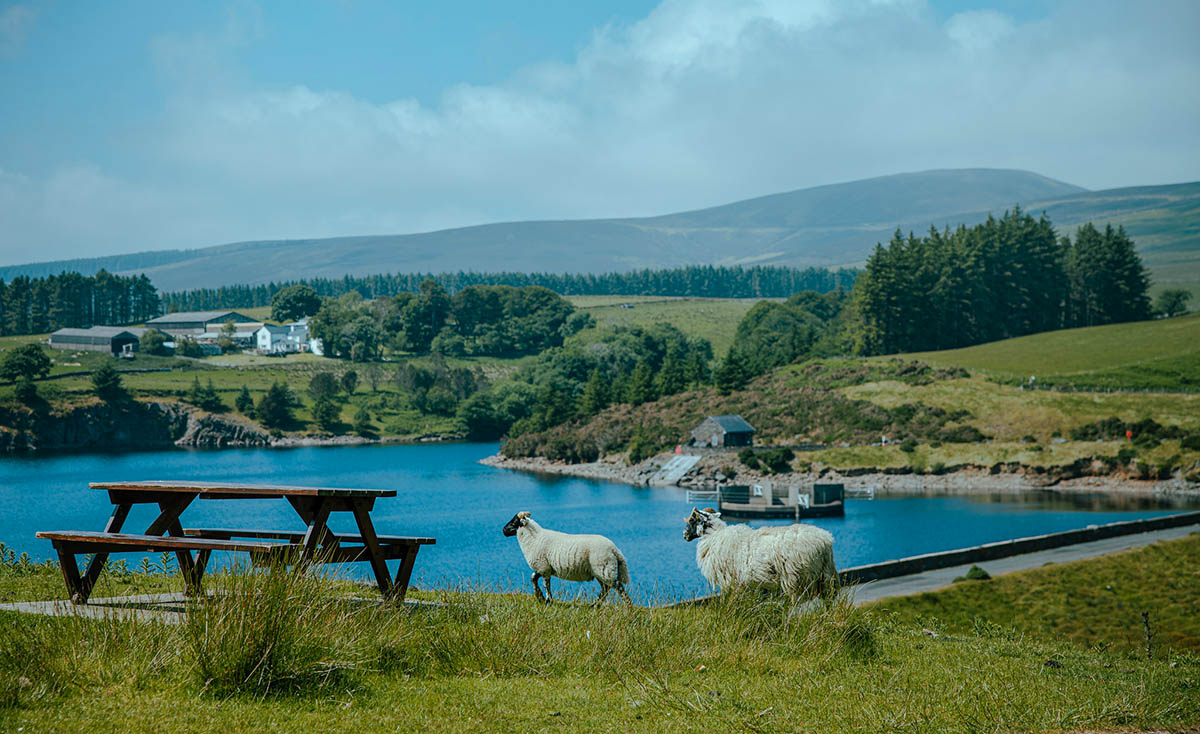
The Isle of Man – A Surprise Around Every Corner
When I first headed to the Isle of Man, I only knew three things about this relatively little-known island floating in the midst of the Irish Sea: it was a self-governing crown dependency of Great Britain, a tax haven and home to one of the world’s most famous (and dangerous) motorbike races.
By the time I left several days later I had discovered it was home to the world’s oldest continuous parliament, the only entire nation in the world to be recognised as a UNESCO Biosphere and the first one to give women the right to vote. And that’s not to mention the country’s fascination with fairies and other mystic creatures.
According to folklore, the 227-square-mile (572-square kilometre) mini nation, which could easily fit into Ontario’s back pocket, was created during an ancient battle between two giants. Noting that his massive Scottish adversary was fleeing, the Irish Finn Mac-Cooill threw huge chunks of his homeland at him; they missed and fell into the Irish Sea, becoming the land I was then visiting.
As for its masculine name, it came from the island’s esteemed first ruler, the great wizard (or sea god) Manannan, who protected the island from invaders by various mysterious acts. On one occasion, he transformed himself into a giant three-legged creature, today the symbol of the Isle of Man.
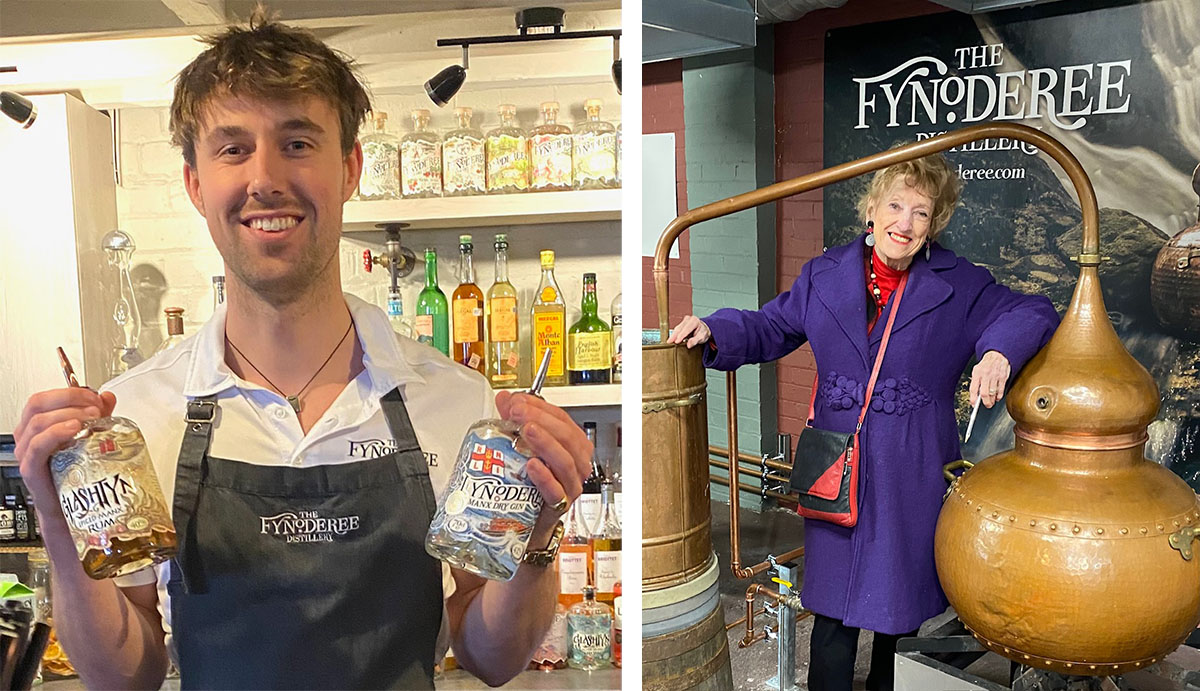
ABOVE: Take your pick at Ramsey’s Fynoderee Distillery. RIGHT: The source of those great spirits at Ramsey’s Fynoderee Distillery (PHOTOs: Mary Moore Mason)
Even now, these mythical creatures continue to be honoured. For instance, as I sipped a splendid juniper-enhanced dry gin in Ramsey’s Fynoderee Distillery, I was told that both the distillery and all its various life-affirming brews were the namesake of a hairy, fiery-eyed, horned and hoofed creature who in ancient times worked for free for certain humans. (It was unclear what message we were meant to take away with this knowledge.)
As I travelled along the A5 Castletown Road in the south of the island, I was told I could obtain good luck by saying Moghreymie (Good morning in the Manx language) as we crossed the Fairy Bridge and later, as we headed back to the island capital Douglas and passed St John’s Tynwald Hill, the site of the island’s first Parliament sessions more than a 1,000 years ago, I was advised that more good luck could be achieved if, while standing on the hill, I rotated in a certain manner.
There was even an explanation as to why Manx cats have no tails: they were so dilatory getting to the Ark that Noah severed them as he slammed the door. Although I, alas, saw none of the famous felines on my travels I did, surprisingly, spot a number of wallabies hopping along the streets of one of the quaint villages. According to my driver/guide, there are now some 500 of these Aussie interlopers, descendants of the two which escaped from the still-existent Curraghs Wildlife Park in the 1960s.
Veering away from whimsy and wildlife here’s what I discovered about the island’s capital and largest city Douglas (population close to 28,000), sited midway up the east coast and linked by ferry to the British mainland. Its beach-overlooking waterfront promenade is lined with hotels, some flaunting their Victorian era vintage, restaurants, shops and such attractions as the elegant early 17th century Villa Marina, venue for special events, and the renovated 1899 Gaiety Theatre, home to concerts and films.
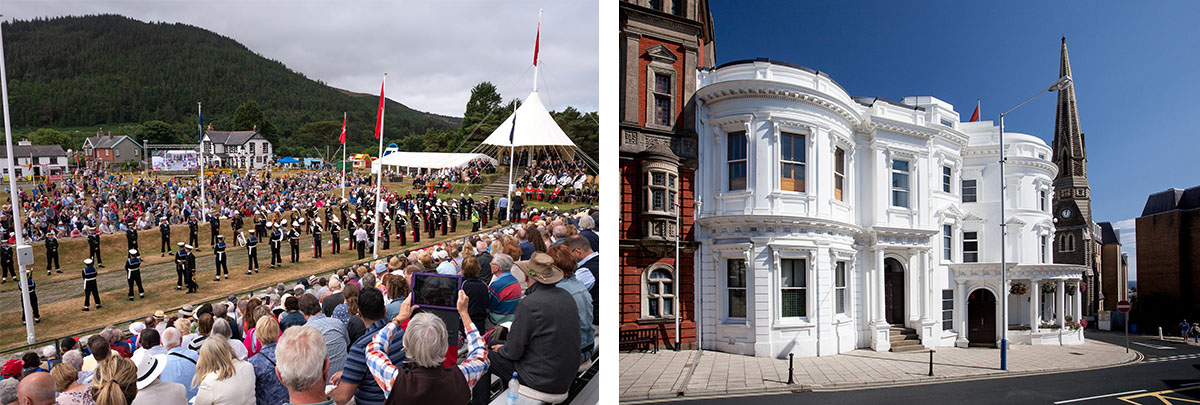
ABOVE: Celebrating Tynwald Day (July 5) at the St Johns site of the original parliament more than 1,000 years ago. RIGHT: The Isle of Man’s Tynwald Parliament building, Douglas. (PHOTOS: Courtesy The Ilse of Man)
In the streets behind are the handsome white Tynwald Parliament building, a display marking the home of local 19th-century womens’ rights leader Sophia Goulden, mother of the even more-famous Emmeline Pankhurst (a reminder that the Manx women got the vote in 1881 nearly four decades before those in the rest of the UK as well as Canada) and the small but rather fascinating Manx Museum, encompassing everything from artefacts of the Norwegian Vikings who first arrived on the island in the 9th century to a gallery honouring the annual May/June TT motorcycle race, which since the early 1900s has been attracting millions of spectators to its perilous up to 200 miles per hour race around nearly 378 miles and 219 turns of the island’s curving public roads.

ABOVE: Manx Museum curator Katie King with a portrait of Sir Thomas Henry Hall Caine. (PHOTO: Mary Moore Mason) The historic Isle of Man Steam Railway linking Douglas with Port Erin. (Photo: Visit Isle of Man) The massive Laxey Wheel once pumped water from the local zinc mine. (Photo: Visit Isle of Man)
My favourite among the portraits of the local rich and famous was one of a debonair Sir Thomas Henry Hall Caine, a literary superstar of the early 1900s whose books and plays inspired many a film, including Alfred Hitchcock’s last silent one, The Manxman.
During the summer, there are horse trams along the waterfront, and throughout the year, you can buy tickets from a rustic 1899 ticket office for scenic Manx Electric Railway rides up the coast to the tourist centres of Laxey and Ramsey. Operating for more than 130 years, the 17.5-mile, 75-minute journey passes lovely rural glens and stunning sea views with the occasional glimpse of a lighthouse. At Laxey, we disembarked to view what is probably the island’s most extraordinary sight: the world’s largest working waterwheel. With a diameter of 72 feet, six inches, this white and red extravaganza was built in 1854 to pump flood water from the now closed Great Laxey Zinc Mine.
You can have a look into a mine tunnel, stroll through the village, take a photo of the statue of a miner (some of whom later emigrated to Canada and the USA) and connect with the Snaefell Mountain Railway, which takes you to the 2,039-foot summit of the island’s highest peak, offering views of not only the island but also parts of England, Scotland, Wales and Ireland.
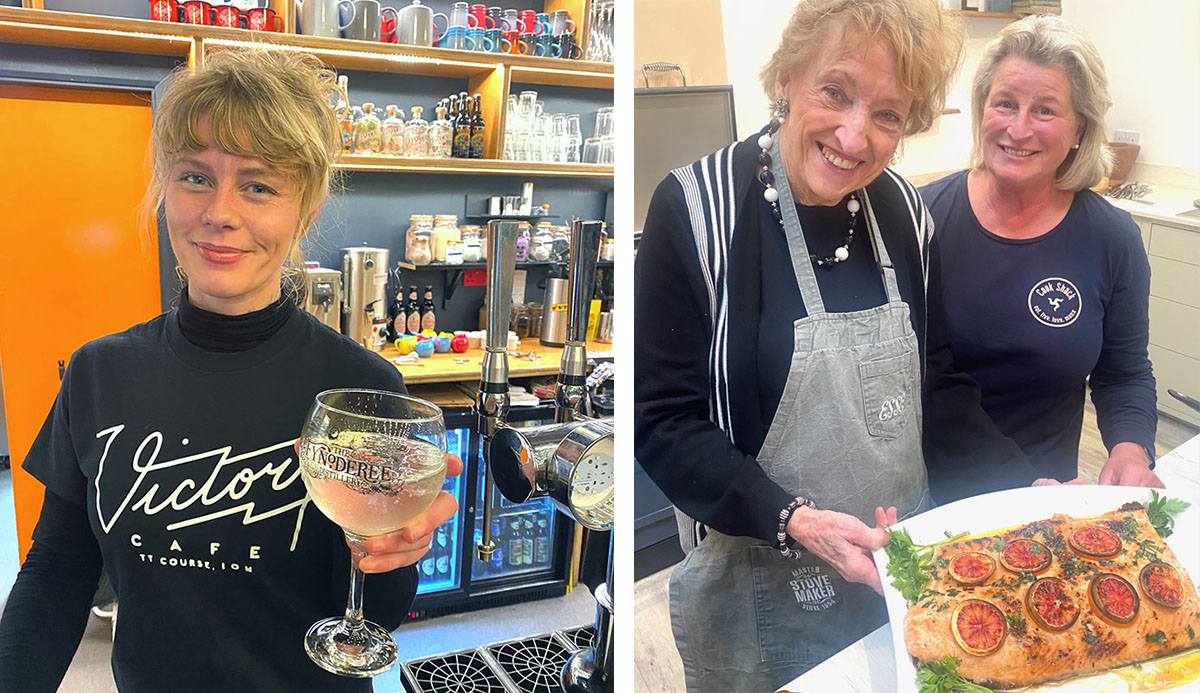
ABOVE: Welcome to the Victory Cafe. RIGHT: Mary Moore Mason with Cook Shack owner/chef Georgie Revell. (Photos: Mary Moore Mason)
Later, our driver/guide took us up to the nearby Victory Cafe, a major site on the TT Motorbike route, where we had excellent pie, mash and draft beer and watched videos of the race.
The rail terminus, Ramsey, offering a vast seafront and beach, is also home to many attractions in addition to the previously mentioned distillery. Among them are a park, boating lake, nature reserve, restaurants, a cinema, shopping centre and, on the outskirts, the Grove Museum of Victorian Life and the Milntown Estate’s stately home, part of it dating back to the 16th century, mainly redesigned in the 1830s and surrounded by 15 acres of gardens.
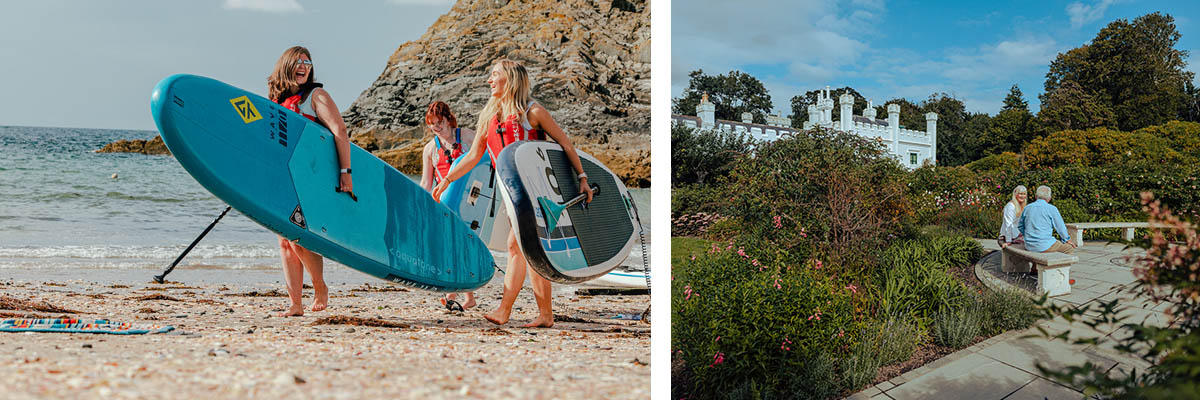
ABOVE: Paddle boarders on Peel Beach. RIGHT: Relaxing at Ramsey’s Milnton Estate. (Photos: Visit Isle of Man)
Still focusing on the northern end of the island, I later joined friends for a culinary treat in the small town of Bride, 18 miles from Douglas but only 14 miles across the Irish Sea from Scotland. Under the guidance of vivacious and knowledgeable Georgie Revell, who has built a ‘Cook Shack’ in her back garden, we produced a delicious meal of local ingredients, including savoury chilli- and honey-garnished sausages made from the island’s unusual four-horned Loaghtans, referred to as “the sheep the Vikings left behind”, salmon garnished with blood oranges and a red cabbage creation.
Later, heading to the south-eastern tip of the island, we visited picturesque Castletown, the island’s former capital and thus home to the Old House of Keys, where the debating arm of the island parliament remained until it moved to Douglas in 1784. Other sites of interest are the island’s oldest remaining roofed building, dating back to the 1200s and now known as The Old Grammar School and a small Nautical Museum. But the unmissable one is the well-preserved Castle Rushen, built some 800 years ago by Norwegian Vikings, reached by a drawbridge, pivotal to various British Civil War events and a Victorian-era prison.
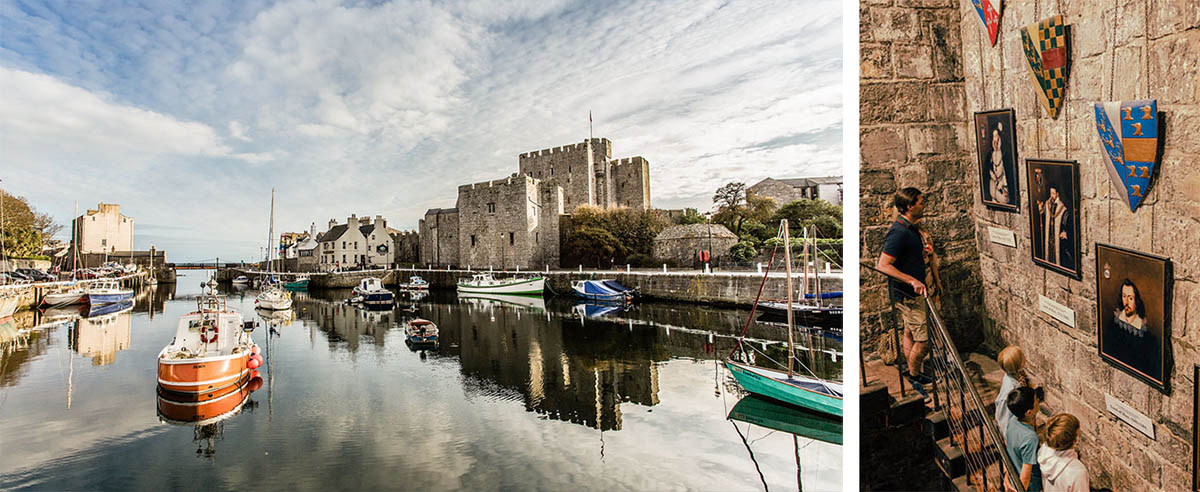
ABOVE: Castle Rushen overlooks Castletown’s harbour. (Photo: Visit Isle of Man) Castle Rushen has an impressive history. (Photo: Mary Moore Mason)
From Castletown we took the historic Isle of Man Steam Railway to Port Erin on the southern tip of the west coast, continuing by car past Cregneash, Britain’s oldest open-air folk museum, to enjoy a beautiful sunset overlooking a small unoccupied island known as the Calf of Man. Known for its huge array of bird and marine life, among them seals, dolphins and basking sharks, it was a reminder of why this small island, with its 27 nature reserves and commitment to self-sustainability as well as 75 percent of its land still in agricultural use is considered a UNESCO Biosphere.
Headed up the west coast, we stopped by the rather intriguing Knockaloe World War I Internment Centre, which housed thousands of German civilians, many of them Jewish, including then well-known artist George Keenan and Joseph Pilates, who spent his time in the centre developing some of his now-famous physical fitness techniques. We also enjoyed some of our own moments of physical fitness activity by dropping by The Mill House, dating back to the 1600s and offering sauna baths, yoga sessions, wild swimming in the nearby Santon Burn river, and overnight B&B accommodation.

ABOVE: Sited on St Patrick’s Island, Peel Castle dominates the waterfront of its namesake city. RIGHT: Visiting Cregneash, Britain’s oldest open-air folk museum. (Photo: Visit Isle of Man)
Then, it was off to the major fishing port of Peel, its waterfront dominated by the massive Peel Castle, which crowns St Patrick’s Isle at the mouth of its harbour. Dating back to the 11th century and encompassing the remains of an ancient cathedral, it is best-known in Manx folklore for the vicious surreal black dog, the Moddey Doo, which in years of yore haunted the premises.
Then, we got a real insight into the history of this remarkable island at the large museum known as The House of Manannan. Fronted by a group of hyperactive statues, it encompasses everything from a re-created Viking ship to dioramas of both ancient Celtic and Viking life. Also of note are the St Germans Cathedral and Leece and Transport Museums.
GETTING THERE
Ronaldsway Airport, north of Castletown is served by regular Easyjet and Loganair flights from London, Edinburgh, Belfast and other places and there are Aer Lingus flights from Dublin and Belfast. www.visitisleofman.com.
Douglas’ Sea Terminal and Welcome Centre is served by Steam Packet Company ferries from the UK’s Liverpool, Heysham (both linked by train with London and other cities), Belfast and Dublin, Ireland.
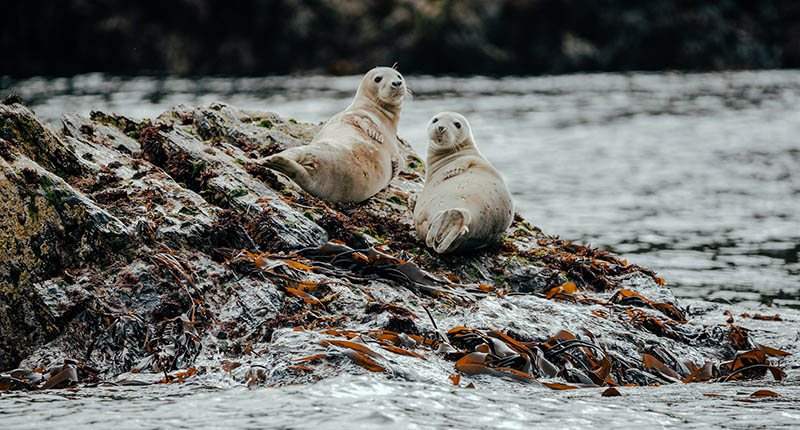
ABOVE: Seals relaxing on the Cafe of Man. (Photo: Visit Isle of Man)
GETTING AROUND
As the island is only 33 miles (53km) long and 13 miles (22km) wide and well-served by paved roads, it is easy to get around by rental cars, the previously mentioned tourist trains, buses and individual- or group-guided tours.
ACCOMMODATION:
Both the Promenade-located Empress Hotel and the Claremont Hotel are four-star, and the newer Mannin is nearby on Broadway.
DINING OUT
We particularly enjoyed the succulent ‘queenies’, a kind of scallops, at Little Fish Cafe on Douglas’s North Quay. Also recommended by locals are Coast Bar & Brasserie at 18-22 Loch Promenade, Naadu, 17 Wellington Street, for its Indian cuisine, and Wine Down, 20 Duke Street, for its wine and food pairing.
For more information on travel to the Isle of Man, visit http://www.visitisleofman.com.
Header image: A typical rural scene beside the Sully Reservoir. (Photo: Visit Isle of Man)

